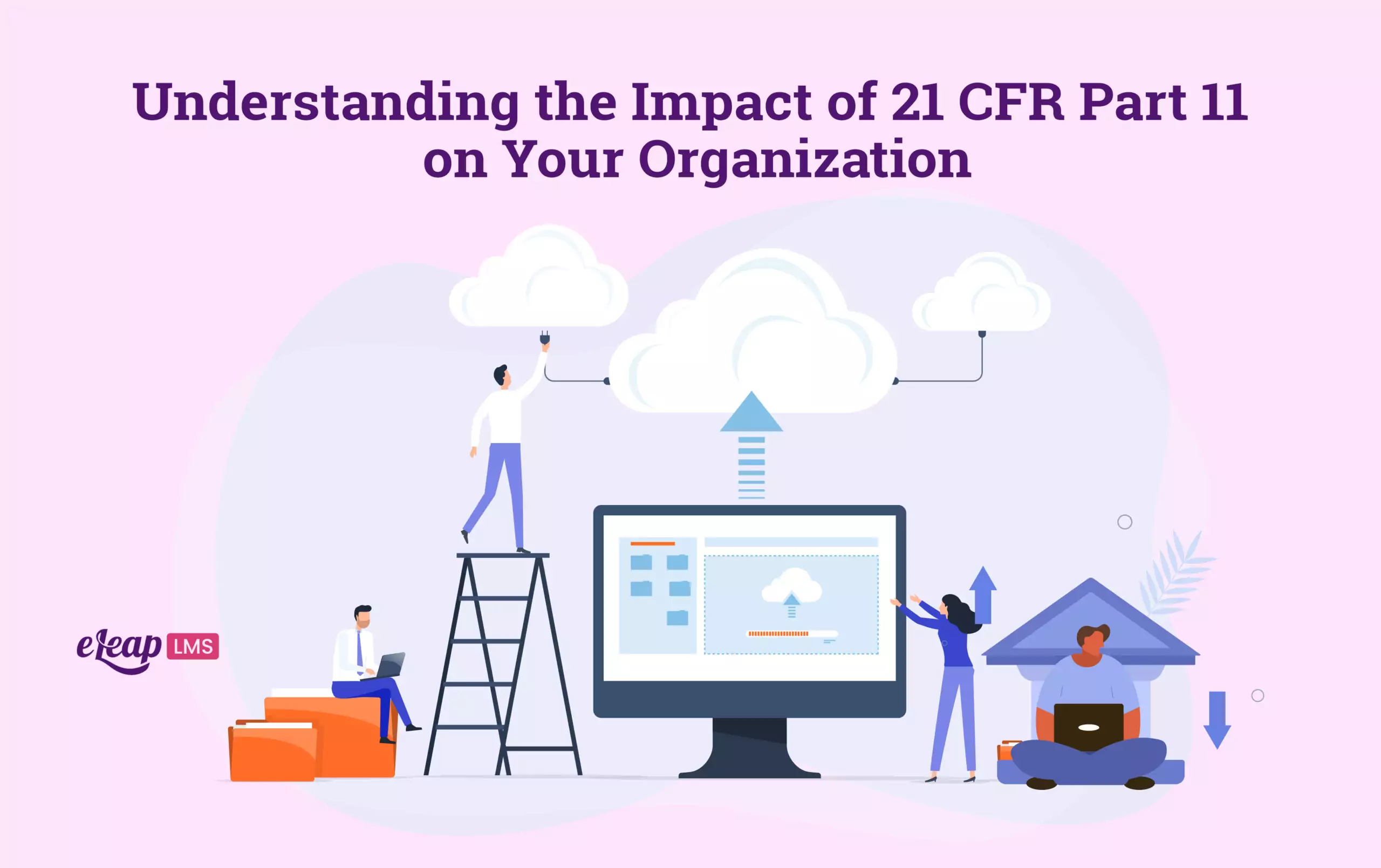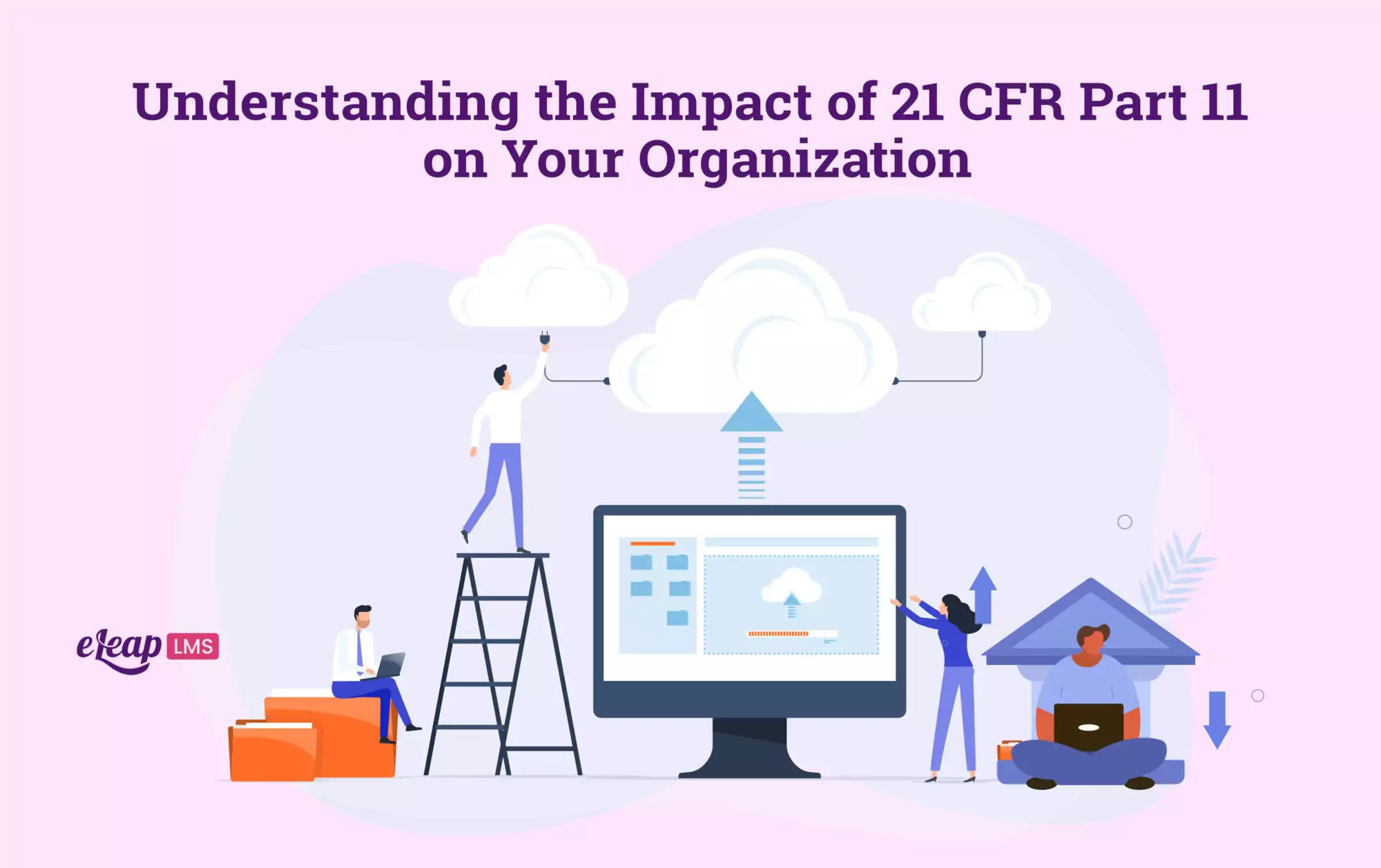Understanding the Impact of 21 CFR Part 11 on Your Organization

21 CFR Part 11 is the legal framework that controls how businesses handle electronic documents and signatures. To comply with the FDA’s statutory inspection requirements, the regulation develops a framework for managing records and electronic signatures, making them generally similar to paper archives and handwritten signings completed on paper.
Here, we’ll be taking a deeper look at the impact of 21 CFR Part 11 on a typical organization and seeing what requirements should be met.

The Need for 21 CFR Part 11
In essence, 21 CFR Part 11 was created as a regulatory solution to safety worries on how biotechnology, pharmaceutical, and medical equipment makers should handle the distribution, storage, and retrieval of records in the digitized age.
The following electronic records elements are of considerable importance to the FDA:
- Software and computer system malfunctions
- The manufacturer’s procedures for maintaining data confidentiality and safety
- Avert data loss or corruption
- Uncontested review and approval signatures
- Traceability of data change
- Detecting and/or preventing fake records
21 CFR Part 11 was also created to accelerate digital transformation and generate significant cost savings for businesses over paper-based record-keeping to ensure compliance with the regulations and encourage enterprises to embrace paperless systems.
Additionally, it aims to lower these businesses’ high costs while retaining paper-based filing systems to satiate regulatory bodies. A fundamental objective is enabling these organizations to eventually establish a regulated shift to digital circuits and digitized operations. If you are unsure if your organization is covered under 21 CFR Part 11, see this course.
The Importance of Complying with 21 Part 11
Typically, regulatory compliance isn’t approached with much enthusiasm. Nevertheless, 21 Part 11 is crucial in defending the sector from non-compliant operators and the accompanying quality assurance errors.
Although adhering to the regulation can appear difficult, it’s crucial to keep in mind that its goals are to free regulated industries from the restrictions of paper documentation, standardize compliance, and provide a mechanism for businesses to operate more quickly. Additionally, software programs created to simplify Part 11 compliance are now accessible.
Following are a few benefits of 21 CFR Part 11 compliance:
- Improved operational effectiveness
- Cost-cutting: Huge space reductions in the warehouse
- Heightened system security
Regulatory Specifications
According to the “General Principles of Software Validation” guidance document, the FDA mandates validating the IT systems covered above. This raises the question of whether the entire software life cycle or the validation process is being discussed.
Closed and Open Systems
A closed system is one where the organization employing it controls system access. Only electronic signatures are necessary because the company has the ability to verify each user’s identification before granting them access to the digital record system.
An open system is one in which the organization using it does not have control over system access. Before granting access to the digital record system, the organization is unable to verify the identities of all users.
Standards for Closed Systems
For closed systems, the criteria are outlined in 21 CFR Part 11.10. The rationale behind the standards is that those using these systems must ensure that all data is authentic, intact, and, if required, confidential. Because of this, the following are important:
- Device verification
- Creation of records that are readable by humans.
- Making sure that records are protected (must be available).
- Restricting system access to those with permission.
- Use time-stamped, computer-generated audit trails that identify who made what changes and when.
- Operational system checks to make sure that, when necessary, just the authorized order of actions and events is implemented.
- Checks for authority to guarantee that only authorized individuals have access to the OS, computer, or peripherals, as well as use the system (for example, digitally generate and sign a document).
- Peripherals verify that outputs and inputs are accurate.
- Training for anyone involved in creating or using the system.
- Falsification is prevented so that signers are accountable for the documents they sign.
- Paperwork on the network includes information on who has access to it, how that access is allowed, whether it is for using or maintaining the system, and information on who modified what and when.
Standards for Open Systems
Open systems are subject to additional rules under 21 CFR Part 11.30. These include steps to guarantee the veracity, integrity, and confidentiality of records, like document encrypting and digital signature standards. Individuals who have handled this topic before will be conversant with 21 CFR Part 11 standards addressing digital signatures.
The following information must be included in a digital signature:
- The signature’s time and date.
- The signature’s significance (e.g., author, approval, review).
- Protection from falsification: Its digital signature can’t be changed in any way.
- Link to record: The signing needs to be joined to the paper to prevent it from being used on any other files.
- Uniqueness: It must be feasible to link a particular person’s signature to that person.
- Methods that are both biometric and non-biometric: The authentication should be founded on biometric techniques or two separate identifying elements, like a password and identification code.
21 CFR Part 11 provides the following criteria for the use of identifying codes and passwords (such as user names, initials, or numbers) in 11.200 (a) as well as 11.300:
- The four-eyes rule states that electronic signatures must be controlled so that it takes the cooperation of two or more people to attempt to use another person’s electronic signature fraudulently.
- Unique combinations: It shouldn’t be able to assign passwords and codes twice.
- Update: To ensure they are still secure, passwords and codes must be reviewed frequently.
- Loss management: There needs to be a process that allows “deauthorization” if passwords, codes, credentials, etc. are misplaced.
- Security precautions: Appropriate safeguards must be implemented to deter and identify illegal access attempts.
- Testing: To ensure input/output gadgets are functioning properly, particularly cards containing or reading permission information, they must be examined routinely.
Conclusion
Your company can benefit from the organizational advantages of digital record-keeping systems thanks to 21 CFR Part 11. Additionally, it enables the FDA to ensure that document safety and integrity are properly preserved when companies employ electronic record-keeping systems. Check out eLeaP’s LMS software right away to learn how it is designed to assist you in achieving and maintaining compliance with 21 CFR Part 11.